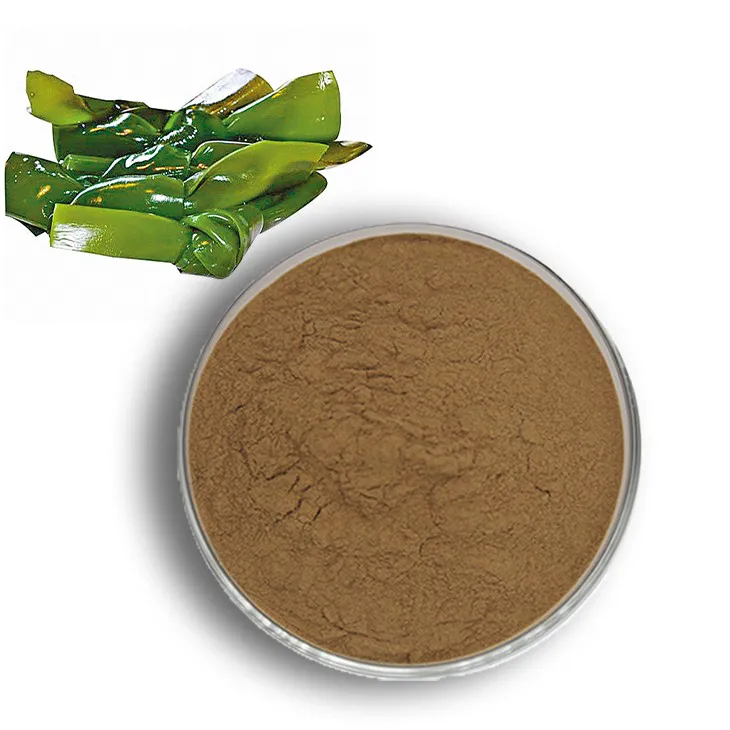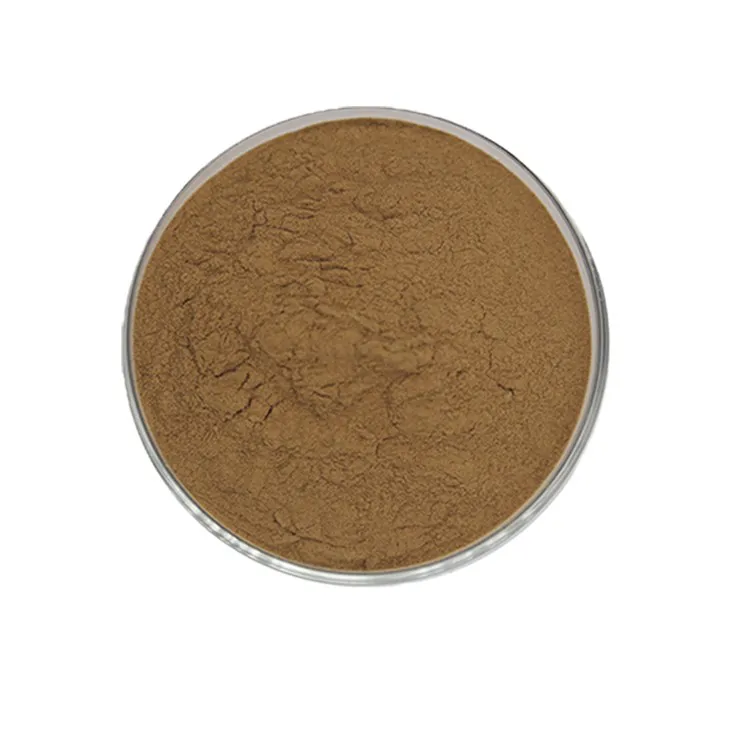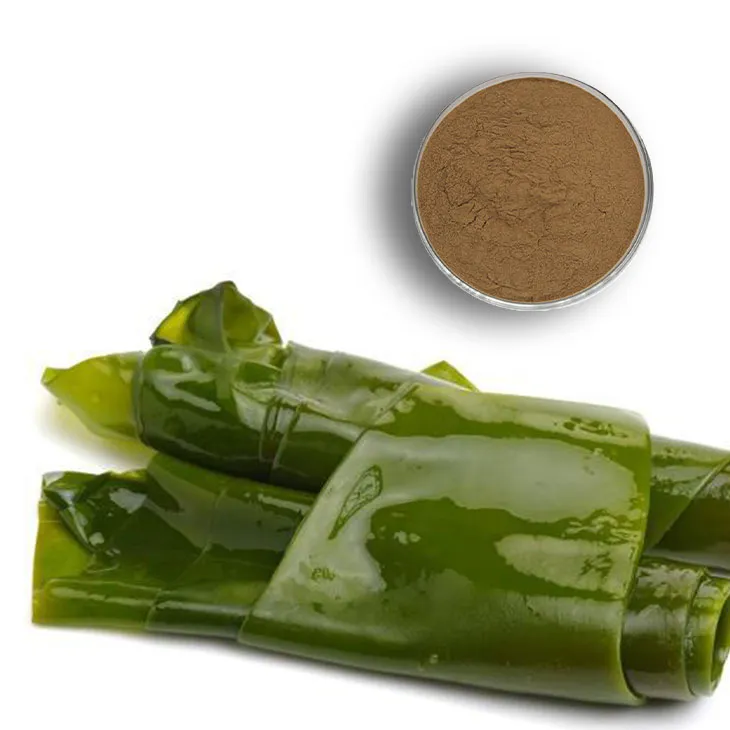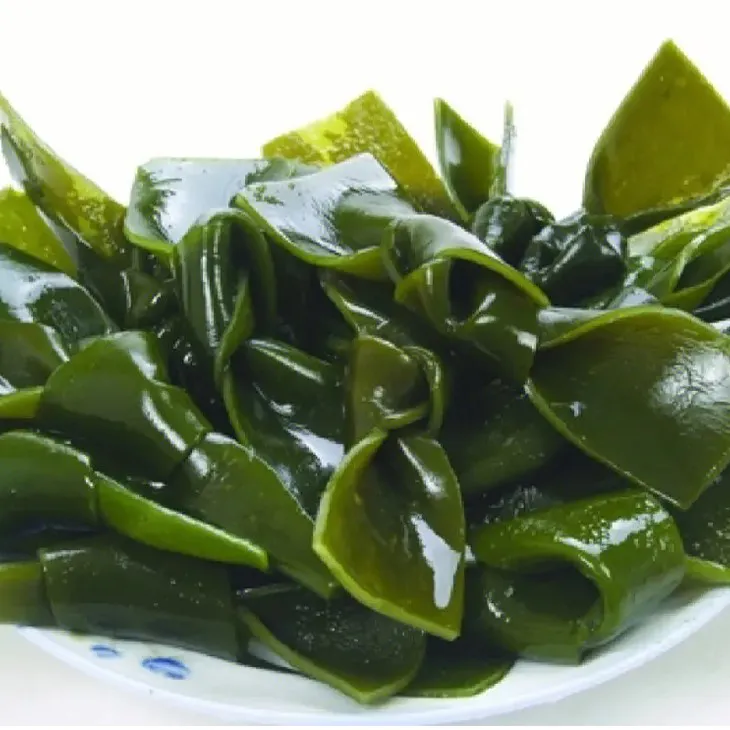- 0086-571-85302990
- sales@greenskybio.com
Chinese kelp extract powder factory.
2024-11-28

Introduction to Kelp in China
Kelp is one of the most common seaweeds in China. It thrives in the rich marine environment along China's long coastline. The wide distribution and large quantity of kelp make it an important marine resource. China has a long history of using kelp, not only as a food source but also in various industrial applications. With the development of modern technology, the extraction of kelp into powder has become an increasingly important part of the utilization of this marine resource.

The Production Process in Kelp Extract Powder Factories
1. Harvesting of Fresh Kelp
The production process in Kelp Extract Powder factories starts with the harvesting of fresh kelp from the sea. This is a crucial first step. Professional fishermen or harvesting teams are usually responsible for this task. They use appropriate fishing tools and vessels to collect kelp. The time of harvesting is also carefully selected to ensure that the kelp has reached an optimal state of growth. For example, kelp that has grown to a certain length and thickness is more suitable for extraction, as it contains more useful substances.
2. Cleaning and Pretreatment
Once the kelp is harvested, it is transported to the factory for cleaning and pretreatment. This step is essential to remove impurities such as sand, shells, and other debris that may be attached to the kelp. The cleaning process usually involves washing the kelp multiple times with clean seawater or freshwater. After cleaning, the kelp may undergo pretreatment procedures. This can include cutting the kelp into smaller pieces to increase the surface area for subsequent extraction. Some factories may also perform drying or blanching operations at this stage to further prepare the kelp for extraction.
3. Extraction Procedures
The extraction procedures are the core of the production process in Kelp Extract Powder factories. Special equipment and techniques are employed to ensure maximum extraction of useful components. There are several common extraction methods. One is the solvent extraction method, where suitable solvents are used to dissolve the useful substances in the kelp. Another method is the enzymatic hydrolysis method, which uses specific enzymes to break down the cell walls of the kelp and release the internal substances. During the extraction process, factors such as temperature, pressure, and extraction time need to be carefully controlled. For example, maintaining a proper temperature can ensure that the extraction efficiency is high while not destroying the active substances in the kelp.
4. Filtration and Concentration
After the extraction, the resulting liquid contains not only the useful kelp extract but also some impurities and solvent residues. Therefore, filtration and concentration steps are necessary. Filtration is carried out to remove solid impurities, and advanced filtration membranes or filters are often used. After filtration, the liquid is concentrated to increase the content of the kelp extract. This can be achieved through methods such as evaporation under reduced pressure or membrane concentration. By concentrating the extract, it becomes more suitable for the subsequent drying process.
5. Drying and Powder Formation
The final steps in the production process are drying and powder formation. The concentrated kelp extract is dried to remove water and form a solid powder. There are different drying methods, such as spray drying and freeze - drying. Spray drying is a commonly used method in industrial production. It can quickly convert the liquid extract into powder form. Freeze - drying can better preserve the activity of the substances in the kelp extract, but it has a relatively high cost. Once the drying is complete, the kelp extract powder is obtained, which can be further processed, packaged, and sent to the market.

Uses of Kelp Extract Powder
1. In the Aquaculture Industry
Kelp extract powder has a wide range of applications in the aquaculture industry. It can be used as a feed additive to improve the growth and immunity of aquatic animals. For fish, shrimp, and other aquatic species, the addition of kelp extract powder to their feed can provide them with essential nutrients. For example, kelp contains a variety of vitamins, minerals, and amino acids. These substances can enhance the physical condition of aquatic animals, making them more resistant to diseases. Moreover, the unique polysaccharides in kelp extract powder can also improve the digestion and absorption ability of aquatic animals, thereby promoting their growth.
2. In the Biotechnology Field
In the biotechnology field, researchers are exploring more potential uses of the unique substances in kelp extract powder. Kelp contains many bioactive substances, such as alginates, laminarins, and fucoidans. These substances have various biological activities. For example, alginates can be used in tissue engineering and drug delivery systems. Laminarins have potential anti - tumor and immunomodulatory effects. Fucoidans have antioxidant and anticoagulant properties. Scientists are constantly studying these substances to develop new drugs, medical materials, and bio - products.
3. In the Cosmetics Industry
The cosmetics industry has also shown great interest in kelp extract powder. The antioxidant and moisturizing properties of kelp make it a valuable ingredient in cosmetics. For example, kelp extract powder can be added to skin creams, lotions, and masks. It can help to protect the skin from free - radical damage, reduce wrinkles, and improve skin moisture. Some kelp - based cosmetics are also claimed to have anti - aging and whitening effects, which are very popular among consumers.

Environmental Protection in Kelp Extract Powder Factories
China's kelp extract powder factories are also committed to environmental protection during the production process. They aim to achieve sustainable development while meeting market demands.
1. Wastewater Treatment
During the production process, a large amount of wastewater is generated. Factories need to treat this wastewater to meet environmental standards. Advanced wastewater treatment technologies are used, such as biological treatment methods. In biological treatment, microorganisms are used to decompose organic pollutants in the wastewater. After treatment, the wastewater can be recycled or discharged safely into the environment.
2. Energy Conservation
Factories also focus on energy conservation. They optimize their production processes to reduce energy consumption. For example, using energy - efficient equipment and improving production management can effectively reduce electricity and fuel consumption. Some factories also explore the use of renewable energy sources, such as solar energy and wind energy, to power part of their production processes.
3. Sustainable Kelp Harvesting
To ensure the sustainable use of kelp resources, factories support sustainable kelp harvesting practices. This includes setting reasonable harvesting quotas to avoid over - harvesting. They also cooperate with relevant departments to monitor the growth and distribution of kelp in the sea. By promoting sustainable harvesting, the long - term availability of kelp resources for extraction can be ensured.

Conclusion
China's kelp extract powder factories play an important role in the utilization of marine resources. Through scientific production processes, they are able to produce high - quality kelp extract powder with a wide range of uses. At the same time, their commitment to environmental protection also reflects the concept of sustainable development. As technology continues to develop, it is expected that kelp extract powder factories will further explore the potential of kelp resources and contribute more to various industries and environmental protection.
FAQ:
What are the main production steps in a Chinese kelp extract powder factory?
The main production steps include harvesting fresh kelp from the sea first. Then, the kelp is cleaned and pretreated. After that, it undergoes extraction procedures. Special equipment and techniques are used during extraction to ensure maximum extraction of useful components.
What are the uses of kelp extract powder in the aquaculture industry?
In the aquaculture industry, kelp extract powder can be used as a feed additive. It helps to improve the growth and immunity of aquatic animals.
How do Chinese kelp extract powder factories contribute to environmental protection?
Chinese kelp extract powder factories are committed to environmental protection during the production process. They aim to achieve sustainable development while meeting market demands. For example, they may use environmentally friendly extraction methods and properly manage waste generated during production.
What potential uses are researchers exploring in the biotechnology field regarding kelp extract powder?
In the biotechnology field, researchers are exploring more potential uses of the unique substances in kelp extract powder. However, specific uses are still under investigation as kelp contains various substances that may have different applications in areas such as medicine, bio - energy, etc.
Why is kelp a suitable raw material for making extract powder in China?
Kelp is a common seaweed in China. It is abundant, which makes it a readily available raw material. Moreover, it contains useful components that can be extracted and turned into extract powder with great economic value.
Related literature
- Kelp Extract: Properties and Potential Applications"
- "Production and Utilization of Kelp - based Products in the Marine Industry"
- "Sustainable Production of Kelp Extract Powder: A Review"
- ▶ Hesperidin
- ▶ Citrus Bioflavonoids
- ▶ Plant Extract
- ▶ lycopene
- ▶ Diosmin
- ▶ Grape seed extract
- ▶ Sea buckthorn Juice Powder
- ▶ Fruit Juice Powder
- ▶ Hops Extract
- ▶ Artichoke Extract
- ▶ Mushroom extract
- ▶ Astaxanthin
- ▶ Green Tea Extract
- ▶ Curcumin
- ▶ Horse Chestnut Extract
- ▶ Other Product
- ▶ Boswellia Serrata Extract
- ▶ Resveratrol
- ▶ Marigold Extract
- ▶ Grape Leaf Extract
- ▶ New Product
- ▶ Aminolevulinic acid
- ▶ Cranberry Extract
- ▶ Red Yeast Rice
- ▶ Red Wine Extract
-
Oat Straw Extract Powder
2024-11-28
-
Saw Palmetto Extract
2024-11-28
-
Sophora Flavescens Root Extract
2024-11-28
-
Artichoke Leaf Extract
2024-11-28
-
Sea buckthorn oil
2024-11-28
-
Stevia Extract
2024-11-28
-
Pueraria Lobata Extract
2024-11-28
-
Lemon Juice Powder
2024-11-28
-
Natural grape seed extract
2024-11-28
-
Curcuma Longa Extract
2024-11-28





















